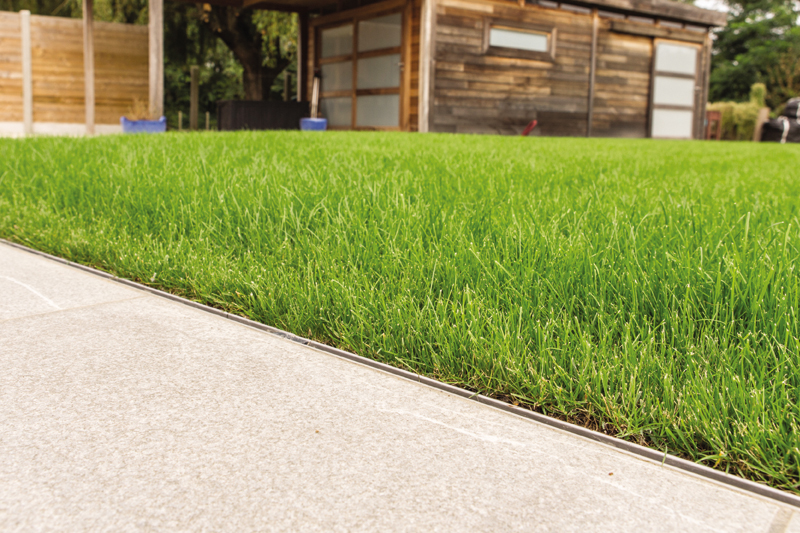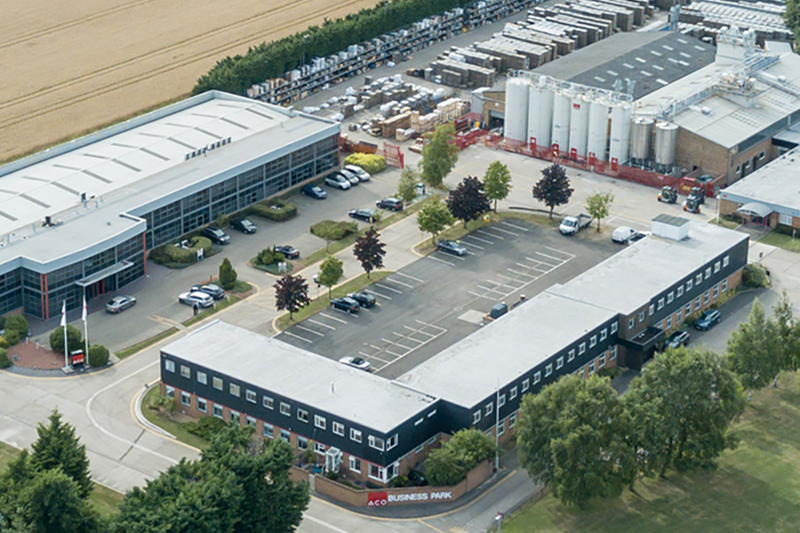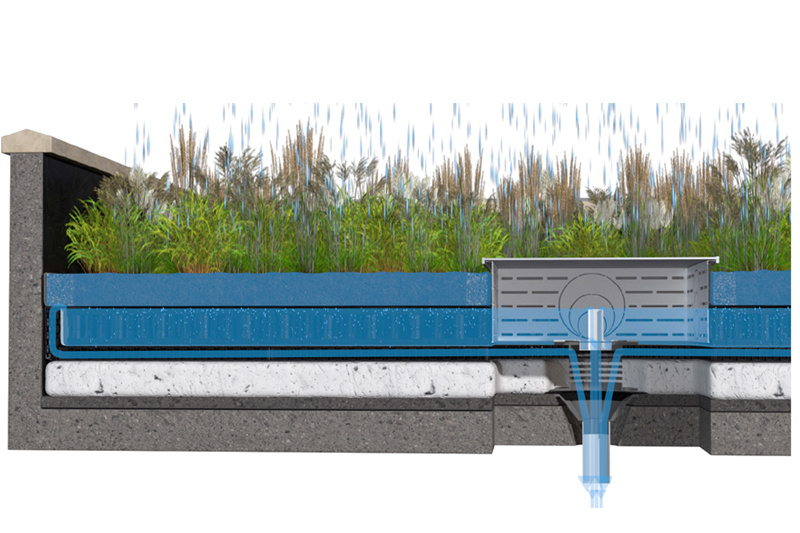
An increased focus on sustainability, both in terms of its product offering and its own business operations, is said to be at the heart of ACO’s ongoing strategy — as evidenced by its recently released Environmental Statement. In an article originally appearing in PBM’s April edition, we take a look at some of the latest developments.
Reportedly the first construction products manufacturer to be listed as a CO2nstructZero Business Champion by the Construction Leadership Council in 2021, ACO Technologies has now published an Environmental Statement to detail its business-wide sustainability commitments and set out its plans to achieve net zero carbon.
A key factor in its endorsement by the CLC was the company’s 31% reduction in carbon emissions in the four years from 2015 to 2019. Having been accredited to ISO 14001 since 2009, the company says it can demonstrate improvements across all its activities and has now announced further commitments.
This includes a continued focus on reducing its operational carbon emissions, verified by measuring CO2e (carbon dioxide equivalent) figures by a third party. Alongside verification, ACO has moved to a 100% renewable electricity tariff which enables the company to be Carbon Neutral for residual scope 1 and 2 emissions by using Gold Standard Carbon Offsets.
To further reduce the carbon intensity of its operations, the business is also set to install ground source heat pumps across its UK site along with the introduction of electric forklift trucks and working with its logistics partners on the transition to HVO fuels. Reducing waste and recycling initiatives are also high on ACO’s sustainability agenda as the company works toward a circular economy.

Dr David Smoker, Technical Director at ACO Technologies, said: “As a manufacturer of building drainage and surface water management products, we must consider how we can protect and enhance the living and natural environment. As such, we remain committed to providing products and design support that will help facilitate the creation of integrated drainage solutions.
“We have challenged ourselves to reduce our environment impact. This has been set out to cover both our manufacturing processes and how we design our products.”
Product focus
The sustainability drive stretches across the group’s business units. For example, while a number of trends often focus on aesthetic appeal and colour schemes, ACO Water Management argues that sustainable design practices must be a top priority for 2022.
Within the sector, the impact of climate change has led to the Association of Professional Landscapers (APL) to set ambitious targets for its members to reduce carbon, chemical and peat-based products and it is also targeting water management practices — by 2025, the APL is looking to work with its members to deliver an aggregate 40% increase in the proportion of water that comes from non-mains and re-used water sources, such as rainwater and runoff capture.
As such, implementing sustainable drainage systems (SuDS) should be a key concern for those involved in designing and building gardens.
ACO’s Oliver Collins said: “Climate change has meant that water management has moved from an ‘issue’ to an ‘asset’ in garden design. While it could lead to a new outlook in terms of garden design, it also opens up a number of opportunities, particularly as the public continues to reassess its relationship with outdoor spaces following the pandemic.
“Protecting the environment is not only being led by governmental changes — customer demand is also hugely influential. Every house in the UK can have a role to play to support the climate and understanding sustainable best practice is therefore going to grow in importance this year. By adopting SuDS solutions and retaining water on-site, we can ensure runoff rainwater does not fill public sewers.”
ACO Building Drainage, meanwhile, used this year’s Futurebuild to showcase a blue roof attenuation system designed to “help increase building resilience and futureproof performance during increasing extreme weather conditions”. The system operates as an open attenuation tank that functions independently of the roof’s waterproofing and drainage system and allows for the controlled drainage of rainwater on all roof types.

In exceedance conditions the roof can drain quickly as the system allows water to discharge by an internal overflow, as well as around the perimeter of the tank. As a result, the system meets planning conditions and Building Regulations without compromising roof waterproofing or overloading the roof structure. Additionally the system is compliant with Flat Roofing and Drainage building standards and the SuDS Manual hydraulic design guidance.
Suitable for both new build and retrofit schemes, it can be constructed on any new or existing flat roof where roof waterproofing has been applied. It is also suitable when used as part of a combined passive irrigation or active rainwater harvesting system.
Kevin Bohea, Divisional Managing Director at ACO Building Drainage, said: “One of the challenges facing most blue roof systems is the extent to which they can mitigate the building risk involved in holding water on a roof for extended periods.
“Conventional blue roofs come with increased risk of a water penetration which could cause long-term damage to the building structure. Our patented system removes this risk thanks to the separate attenuation tank, which essentially prevents the water encountering the waterproofing of the building during design events.”
Click the link for more information on ACO’s sustainability initiatives, including videos and design guides.









